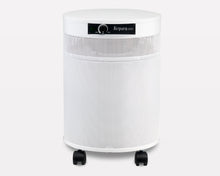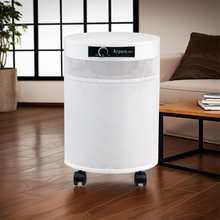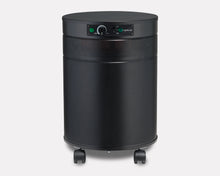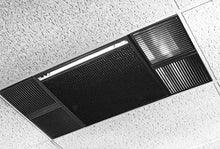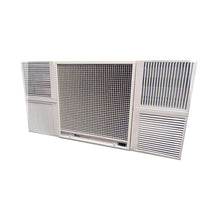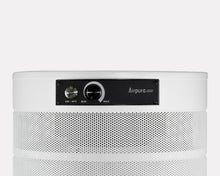The True Cost of Clean Air: Understanding Operating Expenses and Filter Lifespan for Premium Air Purifiers
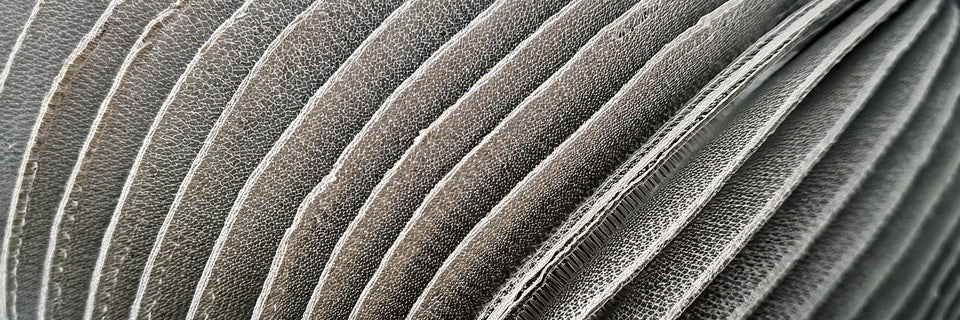
In today's world, the quality of the air we breathe has become a paramount concern. From bustling commercial spaces to the havens of our homes, airborne pollutants, allergens, and pathogens pose a significant threat to our health and well-being. Investing in a high-end air purifier is a crucial step towards creating a healthier environment. However, beyond the initial purchase price, understanding the long-term financial implications is essential. At Commercial Air Purifiers, LLC, we believe in empowering our customers with comprehensive knowledge to make informed decisions. This article delves into the true cost of clean air, focusing on the often-overlooked operating expenses and filter lifespan of premium air purifiers.
Many individuals and businesses focus primarily on the upfront cost of an air purifier. While this is a significant factor, it only represents a fraction of the total financial commitment. Just like owning a car involves ongoing expenses for fuel and maintenance, air purifiers incur regular operating costs that can accumulate over time. Neglecting to consider these expenses can lead to unexpected financial burdens and potentially compromise the effectiveness of your air purification system. This article will illuminate the key factors that contribute to the total cost of ownership, ensuring you have a clear understanding of what it truly takes to maintain a consistently clean and healthy indoor environment.
Decoding the Ongoing Costs: Energy Consumption and Filter Replacement
The continuous operation of an air purifier requires energy, and the frequency of filter replacement is directly linked to its ability to effectively remove pollutants. These two factors form the core of the ongoing expenses associated with owning a premium air purifier.
Energy Consumption: Powering Your Clean Air
Modern high-end air purifiers are designed with energy efficiency in mind, but they still consume electricity while running. The amount of energy used depends on several factors, including the size and power of the unit, the fan speed settings, and the duration of operation. Running an air purifier continuously at high fan speeds will naturally consume more energy than operating it intermittently at lower settings.
Consider the context of a commercial space, such as an office or a retail store. These environments often require consistent air purification throughout the day, leading to potentially higher energy consumption compared to residential use. Understanding the energy consumption of a commercial air purifier is crucial for budgeting and making environmentally conscious choices.
To estimate the energy cost of your air purifier, you can typically find its wattage listed in the product specifications or on a label affixed to the unit. You can then calculate the estimated daily or monthly energy consumption based on your usage habits and your local electricity rates. For example, a purifier with a wattage of 50W running for 10 hours a day would consume 500 watt-hours, or 0.5 kilowatt-hours (kWh), daily. Multiplying this by your electricity rate per kWh will give you the daily energy cost. Over a month or a year, these costs can add up significantly.
It's important to note that features like smart sensors and automatic mode adjustments can help optimize energy consumption. These features allow the air purifier to automatically adjust fan speed based on the detected air quality, reducing energy usage when the air is relatively clean.
Filter Replacement: The Heart of Effective Air Purification
The filters within your air purifier are responsible for capturing and removing airborne particles. Over time, these filters become clogged with pollutants, reducing their efficiency and eventually requiring replacement. The lifespan of an air purifier filter is influenced by several factors:
-
Type of Filter: Different types of filters, such as pre-filters, HEPA filters, activated carbon filters, and specialized filters, have varying lifespans. HEPA filters, which are crucial for capturing fine particulate matter, typically need replacement less frequently than pre-filters, which capture larger particles. Activated carbon filters, used for odor and gas removal, also have their own replacement schedules.
-
Air Quality: The level of air pollution in your environment significantly impacts filter lifespan. In areas with high levels of dust, pollen, pet dander, or industrial pollutants, filters will become saturated more quickly and require more frequent replacement.
-
Usage Habits: Running your air purifier continuously or at high fan speeds can also shorten filter lifespan, as more air and thus more pollutants pass through the filters.
-
Filter Quality: Higher-quality filters, often found in premium air purifiers, may have a longer lifespan and maintain their effectiveness for a more extended period compared to lower-quality alternatives.
The cost of filter replacement for a high-end air purifier can sometimes seem substantial. This is often due to the advanced filtration technologies employed and the quality of the materials used to ensure optimal performance and air purification efficiency. It's crucial to consider the filter replacement cost when evaluating the total cost of ownership of an air purifier.
Failing to replace filters according to the manufacturer's recommendations not only diminishes the air purifier's effectiveness but can also put strain on the unit's motor, potentially leading to premature failure. Therefore, budgeting for regular filter replacements is an integral part of maintaining a healthy indoor environment and protecting your investment.
Calculating the Total Cost of Ownership: A Holistic View
To gain a comprehensive understanding of the financial implications of owning a premium air purifier, it's essential to consider the total cost of ownership. This includes the initial purchase price plus all recurring expenses over the lifespan of the unit.
Formula for Estimating Total Cost of Ownership:
Total Cost of Ownership = Initial Purchase Price + (Annual Energy Consumption Cost x Number of Years) + (Annual Filter Replacement Cost x Number of Years)
Let's break down each component:
-
Initial Purchase Price: This is the upfront cost of the air purifier unit itself.
-
Annual Energy Consumption Cost: This is calculated by estimating the daily energy usage, multiplying it by the number of operating days in a year, and then multiplying by your local electricity rate.
-
Annual Filter Replacement Cost: This is determined by the cost of replacement filters and the recommended replacement frequency for each type of filter in your unit.
By estimating these costs over the expected lifespan of the air purifier (which can range from several years to a decade or more, depending on the brand and quality), you can arrive at a more accurate picture of the true financial investment involved in maintaining clean air.
Example Scenario:
Consider a premium commercial air purifier with an initial purchase price of $1500. Let's assume its average energy consumption costs $50 per year, and the annual cost of replacing all filters is $200. Over a five-year lifespan, the estimated total cost of ownership would be:
$1500 + ($50/year x 5 years) + ($200/year x 5 years) = $1500 + $250 + $1000 = $2750
In this example, the ongoing operating costs (energy and filters) contribute significantly to the total cost of ownership, amounting to $1250 over five years, which is substantial compared to the initial purchase price alone.
Making Informed Decisions: Factors to Consider Before You Buy
Understanding the potential operating expenses and filter lifespan is crucial when choosing an air purifier. Here are some key factors to consider:
-
Energy Efficiency Ratings: Look for air purifiers with high energy efficiency ratings, such as Energy Star certification, to minimize electricity consumption.
-
Filter Lifespan and Replacement Cost: Research the recommended filter replacement schedule and the cost of genuine replacement filters for the models you are considering. Compare these costs across different brands and models.
-
Room Size and Airflow (CADR): Ensure the air purifier is appropriately sized for the space you intend to use it in. A unit that is too small will need to work harder, potentially increasing energy consumption and shortening filter lifespan. The Clean Air Delivery Rate (CADR) is a useful metric for comparing the effectiveness of different air purifiers in removing specific types of pollutants.
-
Warranty and Reliability: A longer warranty period can provide peace of mind regarding the durability and reliability of the unit, potentially saving you money on repairs or replacements in the long run.
-
Long-Term Value: While a lower initial price might seem appealing, consider the long-term operating costs and the overall value proposition. A more energy-efficient unit with longer-lasting filters, even if it has a higher upfront cost, might be more economical in the long run.
Commercial Air Purifiers, LLC: Our Commitment to Transparency and Value
At Commercial Air Purifiers, LLC, we are committed to providing our customers with not only the highest quality air purification solutions but also the information they need to make informed decisions. We understand that the total cost of ownership is a significant consideration, and we strive to offer products that balance performance, energy efficiency, and reasonable filter replacement costs.
We carefully select our air purifiers based on rigorous testing and evaluation, considering factors such as filtration efficiency, energy consumption, filter lifespan, and overall reliability. We believe in transparency and provide clear information about the operating costs and filter replacement schedules for all our products.
Furthermore, we understand the importance of credible data and research in supporting our claims. Studies have consistently shown the positive impact of air purifiers on indoor air quality and health. For instance, research published in the Journal of Allergy and Clinical Immunology highlights the effectiveness of HEPA air purifiers in reducing airborne allergen levels and improving respiratory symptoms in individuals with allergies. (Please replace with an actual relevant citation and link).
Our experience working with various commercial and residential clients has provided us with valuable insights into the real-world performance and operating costs of different air purification technologies. We leverage this experience to curate a selection of premium air purifiers that offer exceptional value and long-term cost-effectiveness.
Practical Tips for Managing Operating Costs and Maximizing Filter Lifespan
While some operating costs are inherent to air purifier ownership, there are steps you can take to manage these expenses and extend the lifespan of your filters:
-
Regular Pre-Filter Cleaning: Many air purifiers include a washable pre-filter that captures larger particles. Regularly cleaning this filter (as recommended by the manufacturer) can significantly reduce the load on the main filters, extending their lifespan.
-
Optimize Fan Speed: Use the lowest effective fan speed for your needs. Higher fan speeds consume more energy and draw more air through the filters, potentially shortening their lifespan. Utilize automatic mode if your unit has it.
-
Improve General Indoor Air Quality: Source control is key. Reduce sources of indoor air pollution, such as smoking indoors, using harsh chemicals, and allowing excessive dust buildup. Regular cleaning and ventilation can also help reduce the burden on your air purifier.
-
Follow Manufacturer Recommendations: Adhere to the manufacturer's recommended filter replacement schedule. Using filters beyond their lifespan can reduce effectiveness and potentially damage the unit.
-
Consider Multiple Units Strategically: For larger spaces, using multiple smaller, appropriately sized air purifiers might be more energy-efficient than relying on a single large unit running at high capacity.
Conclusion: Investing Wisely in Your Health and Well-being
Investing in a high-end air purifier is an investment in your health and well-being. Understanding the true cost of clean air, including the ongoing operating expenses and filter replacement costs, is essential for making informed decisions and budgeting effectively. At Commercial Air Purifiers, LLC, we are dedicated to providing you with the knowledge and the products to create a healthier indoor environment. By considering the long-term financial implications and implementing strategies to manage operating costs, you can enjoy the benefits of clean, purified air without unexpected financial strain. We encourage you to explore our range of premium air purifiers and contact our team for personalized recommendations tailored to your specific needs and budget. Breathe easier knowing you've made a well-informed and valuable investment in your health.
FAQ: Addressing Your Air Quality Concerns
Q: How often should I replace the filters in my air purifier?
A: Filter replacement frequency varies depending on the type of filter, the air quality in your environment, and your usage habits. Consult your air purifier's manual for the manufacturer's recommendations. Pre-filters may need cleaning every few weeks, while HEPA and activated carbon filters typically need replacement every 6-12 months, or as indicated by the unit's filter change indicator.
Q: Does running my air purifier all the time significantly increase my electricity bill?
A: The impact on your electricity bill depends on the wattage of your air purifier and your local electricity rates. Modern high-end air purifiers are often designed to be energy-efficient. Using lower fan speeds and utilizing automatic mode can help minimize energy consumption.
Q: Are generic air filters as good as brand-name filters?
A: While generic filters may seem like a cost-effective alternative, they may not meet the same quality and performance standards as genuine filters from the manufacturer. They might have lower filtration efficiency or a shorter lifespan, potentially compromising the air purifier's effectiveness and even damaging the unit. We recommend using genuine replacement filters to ensure optimal performance and protect your investment.
Q: Can an air purifier completely eliminate all airborne pollutants?
A: High-quality air purifiers with multi-stage filtration systems, including HEPA and activated carbon filters, can effectively remove a wide range of airborne pollutants, including dust, pollen, pet dander, mold spores, and some gases and odors. However, no air purifier can eliminate all airborne pollutants entirely. Source control, proper ventilation, and regular cleaning are also important for maintaining good indoor air quality.
Q: What size air purifier do I need for my space?
A: The appropriate size of air purifier depends on the size of the room or area you want to purify. Air purifier effectiveness is often measured by its Clean Air Delivery Rate (CADR), which indicates how quickly the unit can remove specific types of pollutants from a room of a certain size. Consult the manufacturer's recommendations and consider the CADR ratings when choosing an air purifier for your space.

